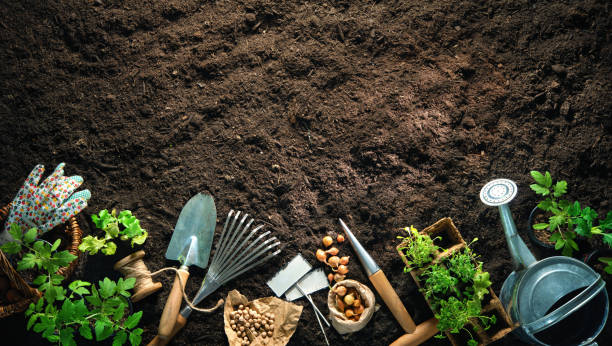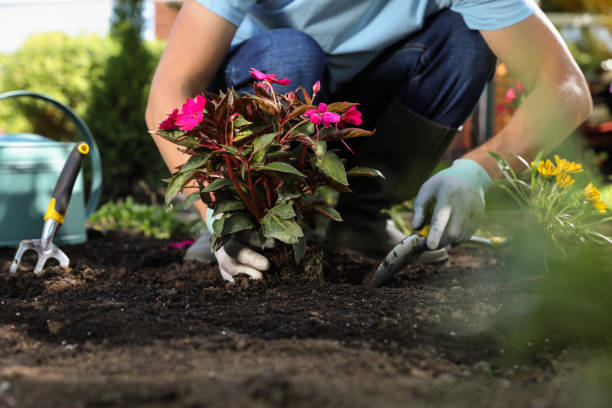Introducing a small garden in your backyard is one of the most appreciable way to connect to nature,reduce the cost of groceries and create a beautiful outdoor environment. If you decide to grow herbs, vegetables or flowers backyard gardening is manageable for starters and enjoyable for seasoned green thumbs alike. Below are a few comprehensive ways and guide to help plant your first backyard garden

1.Select the Right Location
The progress of your garden is selecting a right ideal location.Most plants,especially flowers and vegetables,require 6 hours at least of direct sunlight daily
Observe your backyard during the day to identify areas with consistent sunlight. Also, make sure the area is:
-
Well-drained: Avoid low-lying spots where water collects after rain.
-
Easily accessible: Choose a location close to your house so you’re more likely to tend to it regularly.
-
Protected: Look for a space with some wind protection and not too close to large trees whose roots can compete for nutrients.
-
2. Decide What Type of Garden You Want
Depending on your backyard size and soil conditions, you have a few garden setup options:
-
In-ground garden: Best for large yards with good soil. It’s affordable but may require more weeding.
-
Raised beds: Great for better soil control and drainage. Ideal if your soil is rocky or compacted.
-
Container gardening: Perfect for limited space or patios. Use pots, buckets, or even repurposed containers to grow herbs and small vegetables.
-
3. Choose What to Grow
Start with easy-to-grow, low-maintenance plants, especially if you’re new to gardening. Consider your climate, the season, and how much time you can spend maintaining the garden.
Vegetables:
-
Tomatoes
-
Lettuce
-
Carrots
-
Peppers
-
Green beans
Herbs:
-
Basil
-
Parsley
-
Thyme
-
Rosemary
-
Mint (keep it in a container as it spreads quickly)
Flowers:
-
Marigolds (great for pest control)
-
Zinnias
-
Sunflowers
Choose plants that match the season. For instance, plant lettuce in cooler months and tomatoes in warmer ones.
4. Prepare the Soil
Soil is the foundation of your garden. Before planting, you need to prepare it well.
-
Clear the area: Remove grass, weeds, and debris.
-
Loosen the soil: Use a shovel or garden fork to dig at least 6-8 inches deep.
-
Add compost: Mix in organic compost or well-rotted manure to enrich the soil and improve drainage.
-
Test the soil (optional): A simple soil test can tell you the pH and nutrient levels, helping you add any needed amendments.
5. Plan Your Layout
Sketch a simple layout before planting. Consider:
-
Spacing: Overcrowding plants can lead to poor growth and disease.
-
Companion planting: Some plants grow better together (e.g., tomatoes and basil).
-
Height: Put taller plants at the back or center, depending on the garden shape, so they don’t block sunlight for shorter ones.
6. Plant Carefully
Follow the instructions on seed packets or plant tags regarding depth and spacing. Water the soil lightly before and after planting. If you’re transplanting young plants from a nursery, be gentle with their roots.
7. Mulch and Water
Apply mulch (like straw, shredded bark, or grass clippings) around plants to retain moisture, prevent weeds, and keep the soil temperature steady.
Watering Tips:
-
Water early in the morning or late in the afternoon.
-
Deep watering is better than frequent light watering.
-
Consider installing a drip irrigation system or soaker hose for consistent moisture.
8. Maintain Your Garden
Ongoing care is key to a healthy garden. Spend a little time each week on:
-
Watering: Especially during dry spells.
-
Weeding: Pull weeds early before they take over.
-
Fertilizing: Use organic or balanced fertilizer monthly if needed.
-
Pest control: Inspect plants for signs of pests. Use natural remedies or organic sprays where possible.
-
9. Harvest and Enjoy
The best part of gardening is enjoying the fruits (or veggies) of your labor. Harvest regularly to encourage more production. For herbs, pinch off leaves often to promote new growth.
Final Thoughts
Starting a backyard garden doesn’t require a lot of space or experience—just a little planning, patience, and care. Not only will you enjoy fresh produce and beautiful plants, but gardening can also be a relaxing and fulfilling hobby. Begin small, learn as you grow, and you’ll be amazed at how much joy a few plants can bring.
-
-

